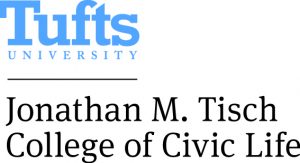Social movements constantly arise and are sources of power and creativity, yet many fail, and some choose bad means or ends. Therefore, it is important to learn how they work and what makes them turn out better.
According to Tilly 2004 (p. 7), a social movement is defined as a whole campaign composed of many different “episodes.” It has some consistency over time. The movement makes “claims” on “target authorities.” By definition, a social movement is not an authority and doesn’t seek to become the authority: it directs its “claims” at the institutions or individuals who can make decisions. It uses techniques like “public meetings, media statements, and demonstrations” to make its claims. And in doing so, Tilly writes, the social movement will present to the public the “worthiness, unity, numbers, and commitment [WUNC]” of its cause. According to Tilly’s framework, movements will be more likely to succeed if they are large, if they present a common front, and if they convey their own worthiness and commitment to the cause. In contrast to a single organization, a social movement is polycentric.
Issues
Leaders of social movements typically ask participants to sacrifice for their cause. Sacrifice (e.g., suffering discomfort on a picket line, or putting oneself at risk of arrest) can be an effective form of persuasion. Although sacrifice rarely influences the opponent, it may attract support from potential allies. Yet the expectation of sacrifice can be too high.
There is usually a great deal of deliberation within any movement about tactics, strategies, and goals. How the movement handles disagreement may be essential to its success.
Social movements must be organized to accomplish common actions. That requires techniques to coordinate individuals’ behavior. It may require some kind of leadership structure.
Activities
- Assessing SPUD (Scale, Pluralism, Unity, Depth)Background Whether you’re building a social movement, organization, network, or media platform, you should strive for SPUD: Scale: You need a lot of people, at least relative to the size of the community that you are trying to influence. For example, to have an affect on a national election, you may need millions of participants. … Continue reading
- The Montgomery Bus BoycottThe Montgomery Bus Boycott by Peter Levine is a case study about “a classic example of a social movement episode that accomplished its immediate goals despite severe obstacles. It catapulted the 26-year-old Rev. Martin Luther King Jr. into international prominence and launched similar episodes in many American cities across the South and then also the … Continue reading
- Building a Party with Activists: The Case of the Uruguayan FABuilding a Party with Activists: The Case of the Uruguayan FA by Verónica Pérez Bentancur, Fernando Rosenblatt and Rafael Piñeiro Rodriguez is a “case study is about the Frente Amplio (Broad Front, FA) in Uruguay, which began in 1971 as a coalition of 12 political groups that aimed to unify the political left and channel the political … Continue reading
- Asset-Based Community DevelopmentAlthough civic actors should think critically and address problems, it is also valuable to be able to identify and appreciate the existing assets of any community, no matter how disadvantaged. Lesson 8 of Longo 2023 entitled “Asset-Based Community Development,” helps to develop skills for focusing on assets in communities.
- One-to-One InterviewsA basic technique of community organizing is to conduct one-to-one interviews with members of a community to gain understanding of issues and needs, create relationships, identify people who have leadership potential, and recruit residents for group discussions and collective action. An example of a guide to one-to-one interviews is Lesson 9 of Longo 2023, available … Continue reading
- Vote16USA’s Campaign to Lower the Voting Age in San FranciscoThis SNF Agora case study by Scott Warren and Brandon Klugman “explores challenges that emerged for a coalition of high school–aged activists involved in the Vote16SF campaign, a movement to lower the voting age in San Francisco. This activist group, led by young people, sought to balance the passion and idealism of its convictions with the … Continue reading
- Assessing SPUD (Scale, Pluralism, Unity, Depth)Background Whether you’re building a social movement, organization, network, or media platform, you should strive for SPUD: Scale: You need a lot of people, at least relative to the size of the community that you are trying to influence. For example, to have an affect on a national election, you may need millions of participants. … Continue reading
- The Power CubePolitical scientist John Gaventa and colleagues have developed the Power Cube as a tool for groups to use to analyze the situations that concern them. It breaks down the forms, spaces, and levels of power and the interactions among those. The Power Cube website offers accessible guides and handouts for facilitators and participants.

